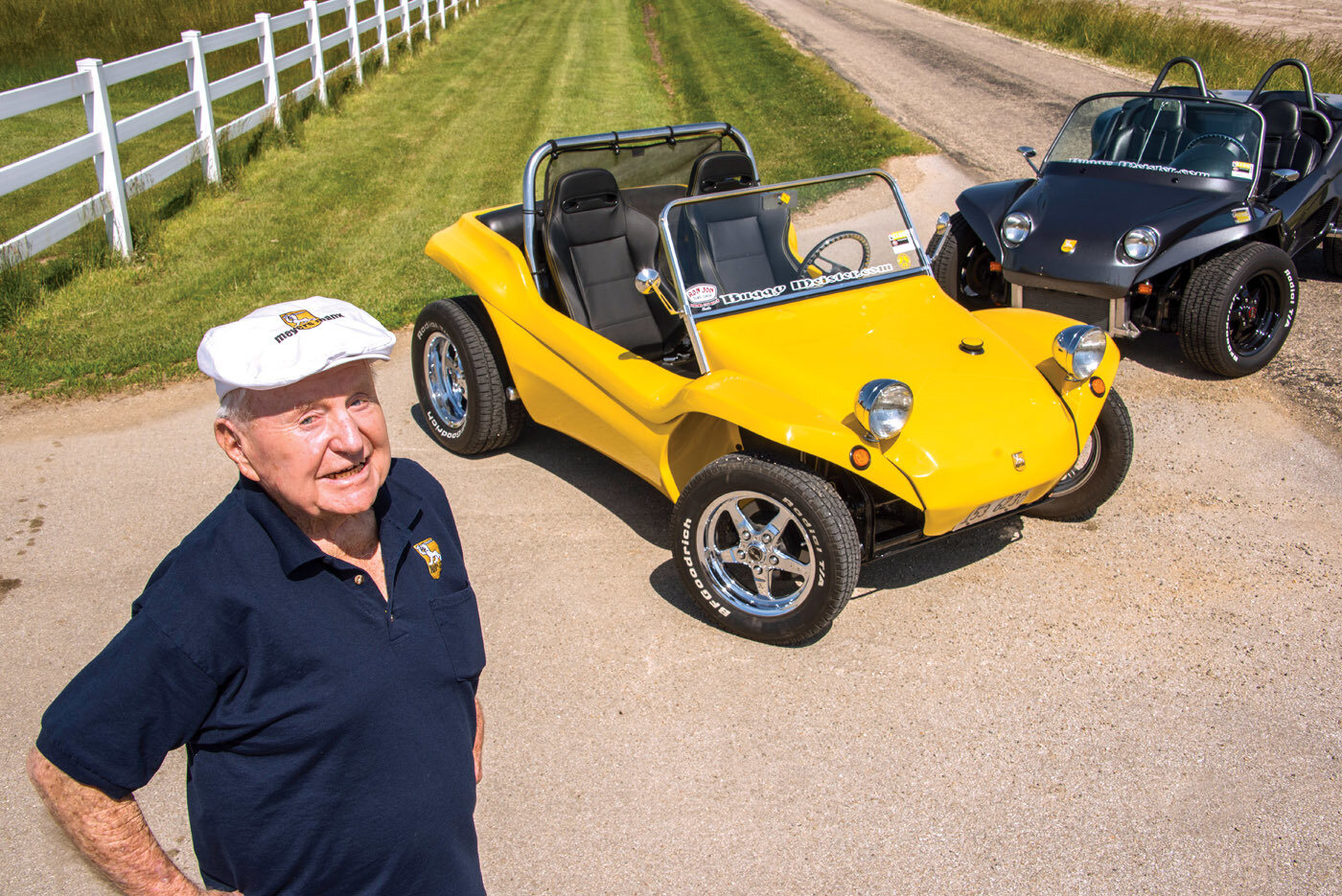
Bruce Meyers reveals inspiration for Manx Buggy and Kick-Out SS
Story by Steve Temple and Joshua Golabi
Photos by Steve Temple
The origin of the famous and enduring Meyers Manx is an oft-repeated tale, but it merits revisiting, as this free-spirited sand slinger is now becoming a serious collector car. After all, the Manx has been shown at the prestigious Petersen Automotive Museum, posted big wins at Baja and Pikes Peak and crossed auction blocks at lucrative prices. As just one example of the latter, a nicely finished Manx sold at RM Sotheby’s auction for nearly $65,000. On the other hand, some well-used Manxes have been trading in the low teens, creating an investment opportunity for automotive restorers.
So when we came across the opportunity to visit with Bruce Meyers and his wife, Winnie, at Mid America Motorworks’ VW Funfest last June, we jumped at the chance to talk with this talented and influential designer. We were entranced as he shared some untold stories and insights about the Manx, but before revealing them, we should provide some background on its development.
It all began in 1963, when Meyers and a few friends were mired in the sand at Pismo Beach, California, in a chopped-down, V8-powered Plymouth sedan. He then spotted another vehicle effortlessly whipping all over the sand with hardly a care. The crude runner was a bare Beetle floorpan with no body, just an engine, seat and roll bar. That proved to be a decisive moment of inspiration for him.
“What if that rig had a sleek, lightweight fiberglass body?” Meyers mused. It would be far more comfortable and still just as capable in the sand and dirt. Drawing on his artistic vision and boat-building skills, he crafted a monocoque chassis with a fiberglass body and Volkswagen Beetle suspension.
Meyers’ inspiration for the shape is somewhat unclear however. Commenting on the design of the original Manx, he admits, “I don’t know why I did what I did: It’s a mystery to me. I just followed my instincts.”
Only a dozen Manx models had this early chassis design, as it proved to be too expensive to produce. Later production models used a shortened VW pan instead.
Meyers went on to produce more than 6,000 vehicles, not exactly a huge number by modern production-car standards, but still sizable for a small-scale operation. That figure doesn’t include all the imitation dune buggies built in those days, though, and some estimates run as high as quarter of a million copycats. The Manx’s trendy shape grabbed the attention not only of Hot Rod magazine, but also Car and Driver, and it appeared on their covers three separate times.
The design’s enduring popularity doesn’t come as a surprise to Meyers. “When you create something with an original thought, grace and a sense of balance in its form and function, it’s timeless,” he observes.
As the Mac Daddy of all dune buggies, Meyers is arguably one of the most significant designers in automotive history. “To me, the aesthetic is very, very important,” he says. “To project that sense of freedom and fun — that’s the essence of the Manx.” Some have gone so far as to liken the car’s design to a bikini, given its trim lines and beach persona.
Meyers gladly shared some perspectives on how he came up with such an alluring shape. He points with a knobby finger to a curved section of the body over the rear tire, just aft of the roll bar. The fiberglass contour is bent at a 90-degree angle. “And this,” he notes, “this is the arabesque line.”
French for “Arabic-style,” it’s an artistic style dating back to the early 6th century. Arabesque art and sculpture focus on rhythmic linear patterns. Symmetry is fundamental to a harmonious design; it exemplifies completeness, perfection and the desire for unity.
On the Manx, these lines give its elegant, stylish curves. But the arabesque line is about more than just style, as the angle is a structural design as well. It forms a continuous functional angle around the body, which provides structural support needed for the fiberglass to withstand the forces a dune buggy endures.
So how did a California surfer with no formal automotive design or engineering background create something so unique and complex? As fate would have it, Meyers is talented at sculpting, and life drawing, and has a keen eye for structural elements as well.
“It’s all about sculpture,” he explains. “Sculptural shapes are important to the look, but more important to the shape.”
Meyers spent many years studying and drawing the human body, eventually moving on to teaching life drawing.
“I’ve always been fascinated by the elegance and structure of the human body,” he notes. “You have these beautiful areas that curve and bend smoothly, then you have a bone or joint that pokes out. Then the body transitions back to smooth curves, and suddenly you encounter another joint sticking out. All these joints allow the body to bend and move while maintaining the body’s structural integrity.”
All this attention to detail and creativity came into play when he designed the Manx. “I modeled the car after the naked human body,” he grins, a bit mischievously. “A mesmerizing shape of curves and joints.”
Meyers combined his appreciation for the human body with his talents in sculpting and boat building. The result is a car unlike any other: designed with the arabesque curves of the human body, structural integrity that can navigate just about any geography and a style that brilliantly captures the spirit of Southern California.
Two eras of Meyers Manx for one amazing ride
It’s not often the owner of a car gets to meet its designer, and even more rare that he’ll sign and pose with his creation. Mark Frey enjoyed this privilege twice over, since he owns two Manxes, an early design (finished in yellow) and an updated version called the Kick-Out SS.
Mark’s training as a mechanic has come in handy on various projects, but after dumping too much money into a ’93 Z28 Camaro, he became intrigued by the lower cost of a Volkswagen-based buggy.
“I found a Meyers Manx body up in Wisconsin,” he relates. “The guy didn’t know if it was a Manx or not, but that didn’t really matter to me, as I loved the body style compared to any other one I had seen out there.”
After Mark got it back home and started giving it a detailed look over, he realized it needed much more than a little TLC.
“There was a lot of bodywork that needed to be done. It also needed a different frame because I wanted the IRS suspension,” he relates. The buggy came together nicely over the course of a year, with a VW Type 1, stroked and punched to 2,110 cc. He also converted it to EFI, using a MegaSquirt MicroSquirt ECU and custom intake with a Honda B Series throttle body. Initially he left it naturally aspirated, but after he got a taste of turbo boost, he never wanted to go back. So he bolted on a Garrett 2967 turbo, and the whole shebang delivers 200 horses, many times over what the original 1,600 cc Type 1 lump ever did.
Not one to let his Manx curl up on the couch, Mark drove it to Mid America Motorworks’ VW Funfest in 2011, where he met up with Bruce Meyers, who promptly authenticated it by signing the tail of the car.
“That was an awesome feeling: To have the creator of my body [design] personally sign it meant the world to me,” Mark relates. “I don’t think I have smiled that much in my lifetime.” Well, except for when he met his future wife, Kelly, who shares his passion for the Manx. Looking for a joint project, they both also liked the Kick-Out SS. (The name Kick-Out refers to a surfer’s move at the end of riding a wave, something Meyers knows firsthand.)
“We already owned the original body that Bruce made,” they reasoned, “so why not own the last body style he would make?”
Rather than redo somebody else’s dilapidated project, though, Mark and Kelly started fresh with a body already signed by Meyers at the factory. While waiting for it to arrive, they began planning on a serious upgrade in the power department — more than double the output, in fact.
“I didn’t want a stock engine. That is not like me at all,” Mark admits. “But I needed something that would be reliable at the same time.” While some people think there is no such thing as a “safe” high-performance engine, Mark feels they are completely wrong.
“It is very doable as long as the engine tuner knows what they’re doing, and that’s exactly who I found.” To safely optimize the performance of his new Subaru engine, Mark sought the services of a company called OG Tuned. While tweaking the output was a fairly straightforward affair, the install was not.
“Everything about this entire build is custom,” Mark relates. “What a lot of people don’t understand is that I installed a water-cooled engine and a five-speed transmission in a car that should have had an air-cooled engine and a four-speed transmission.”
So there was nothing in this build that didn’t need to be altered. Start to finish took two years to complete, but it was worth it to see the final result.
“I can honestly say there is nothing I would do differently on this build — it is 100% done.” Even so, his Kick-Out SS is far more than just a project car for him.
“The buggy has been a part of everything that has happened in my life,” he says. “I have met wonderful people, married a wonderful, supportive wife and met amazing friends. If it wasn’t for my buggy projects, I don’t think this path I chose would have ended up this great. My journey in life is far from over, but I can tell you one thing: This ride has been an amazing one so far.”

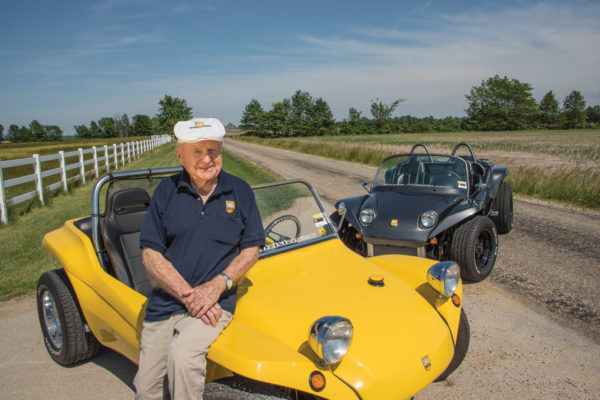
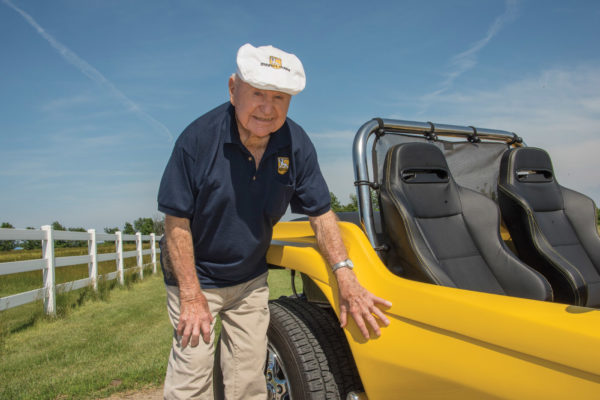
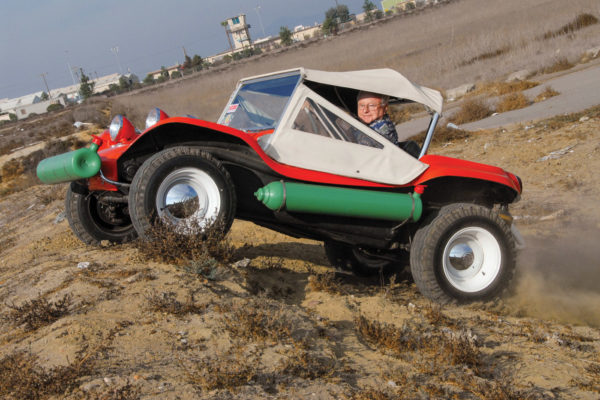
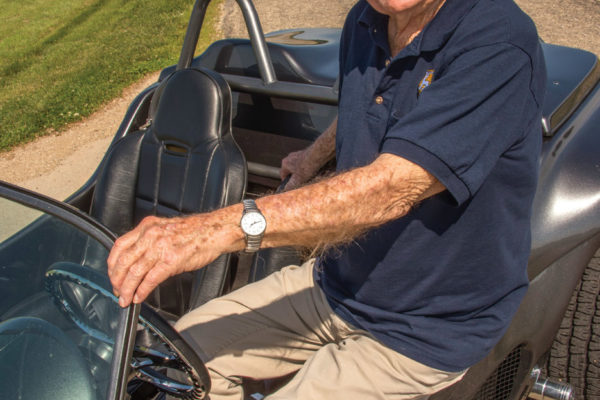
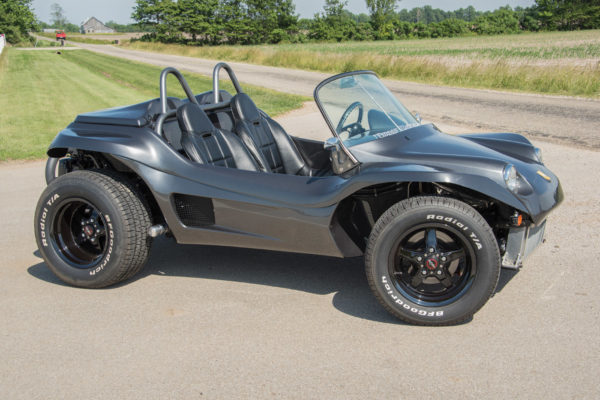
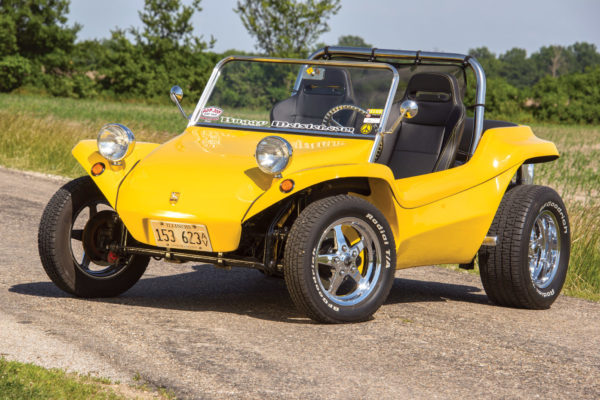
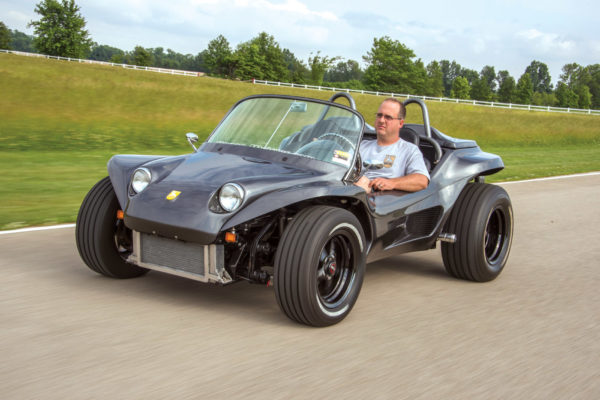
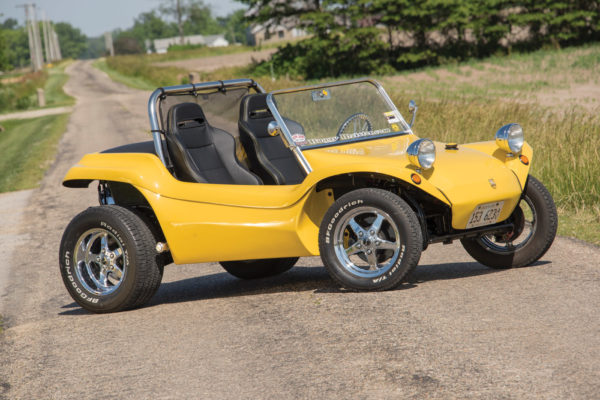
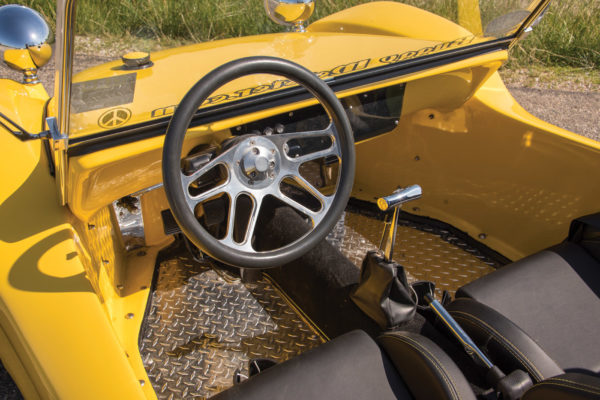
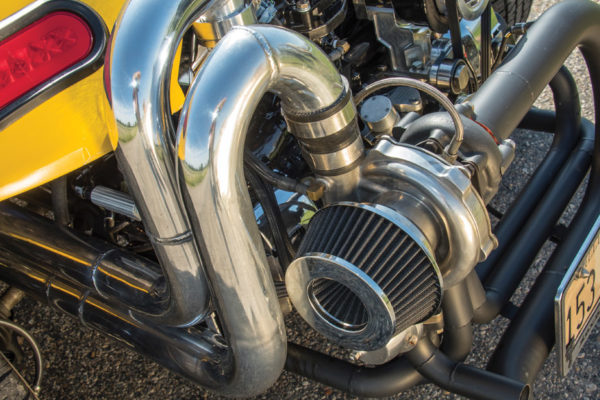
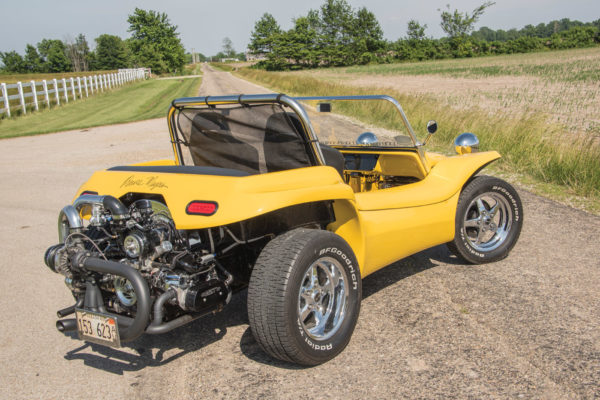
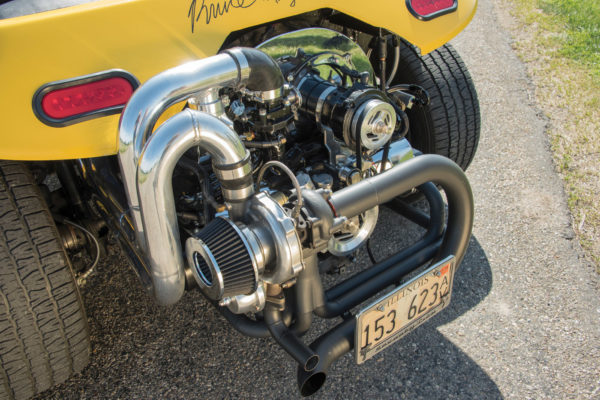
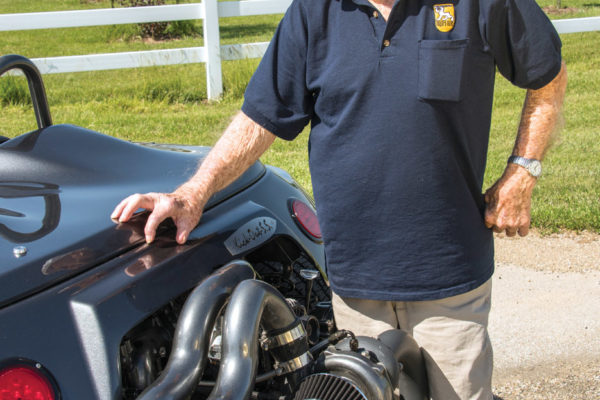
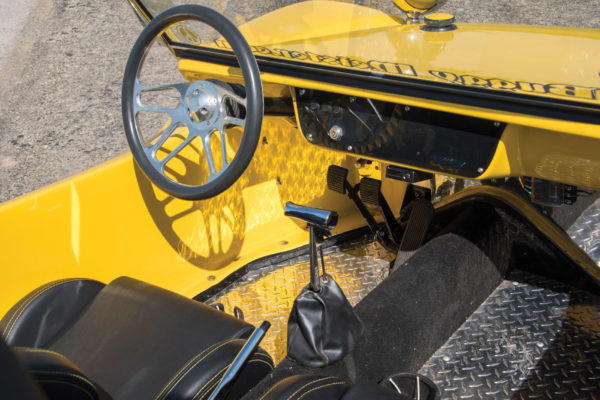
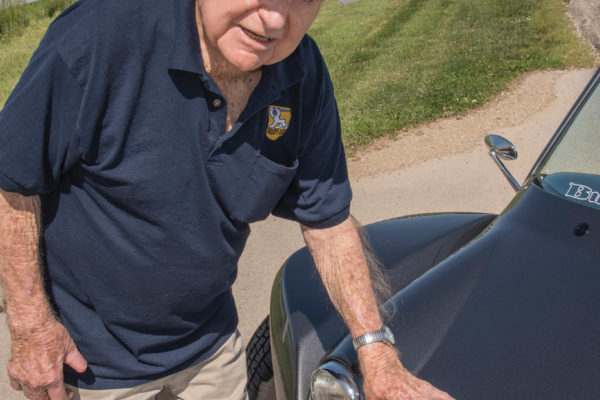
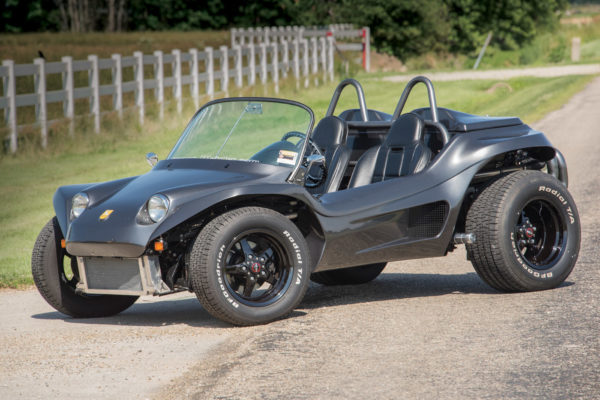
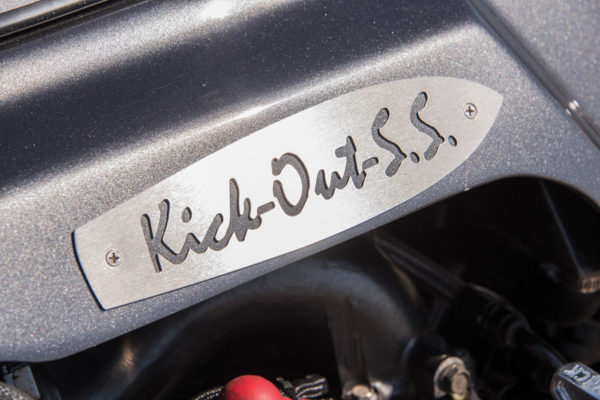
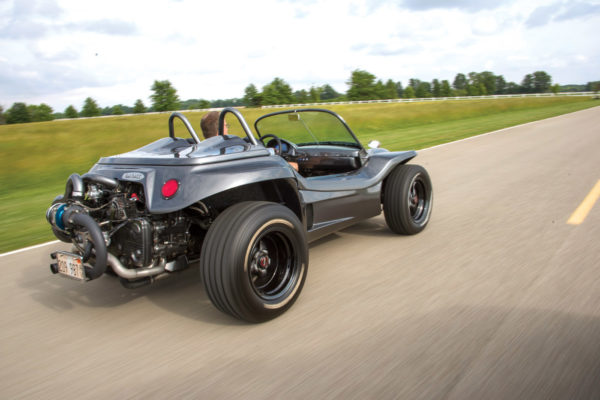
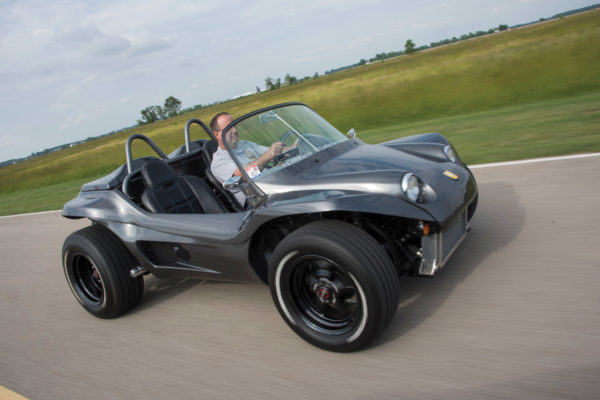
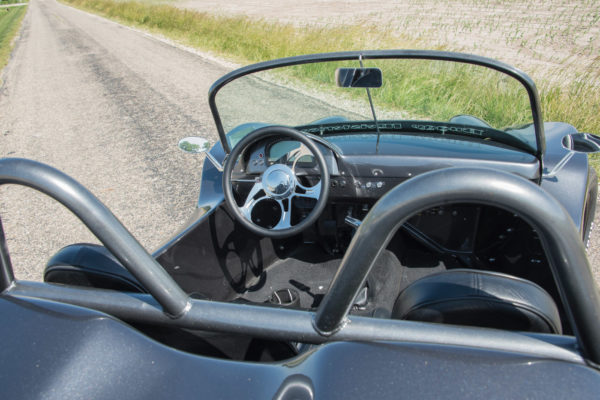
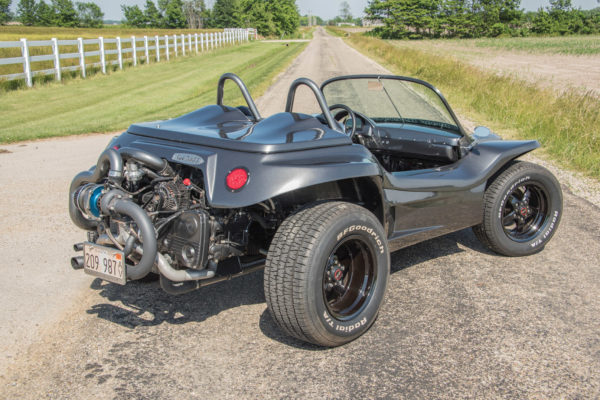
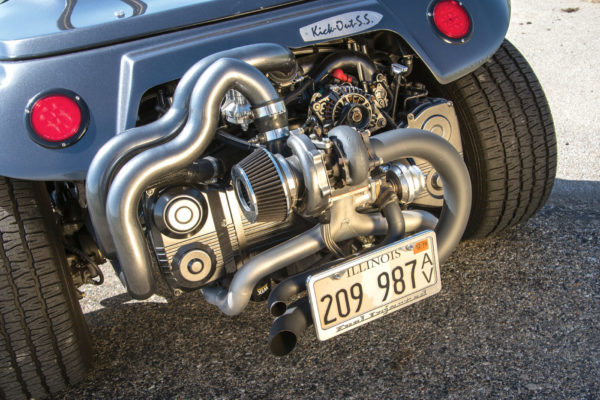
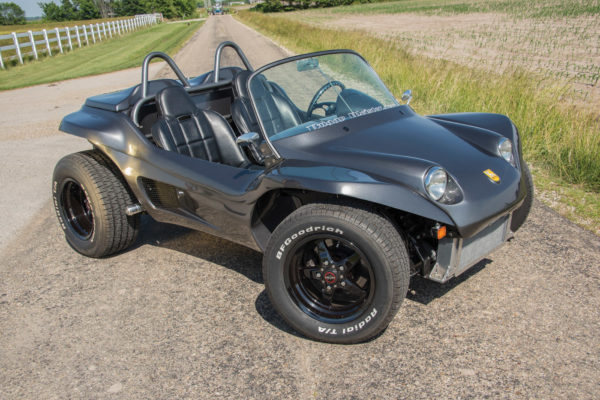
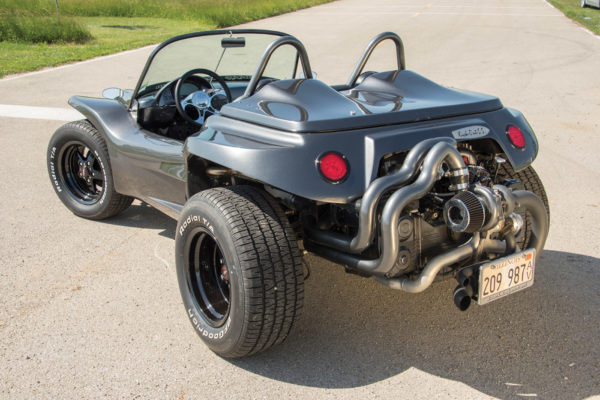
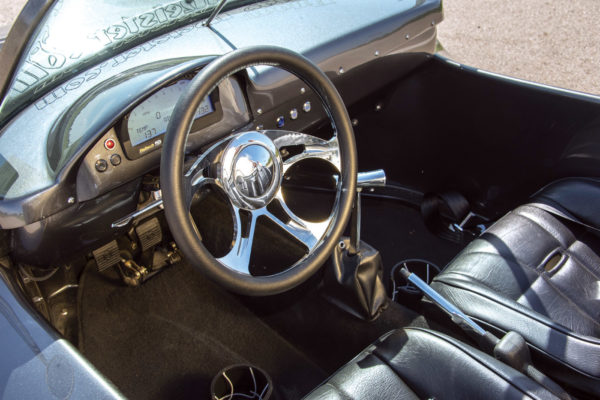
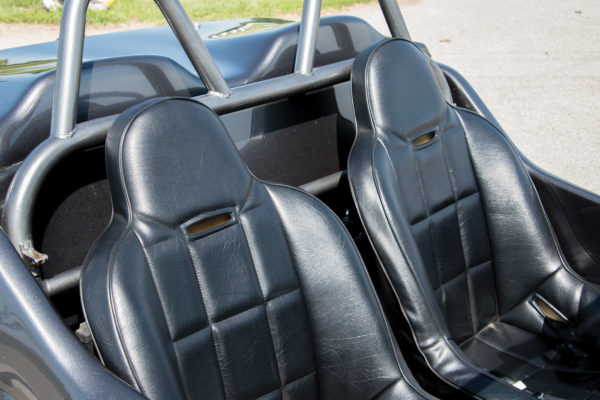
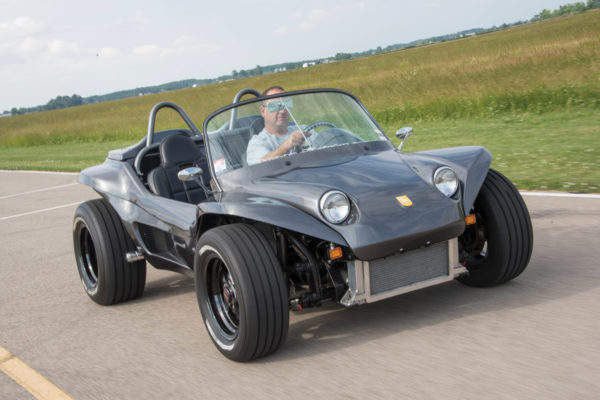
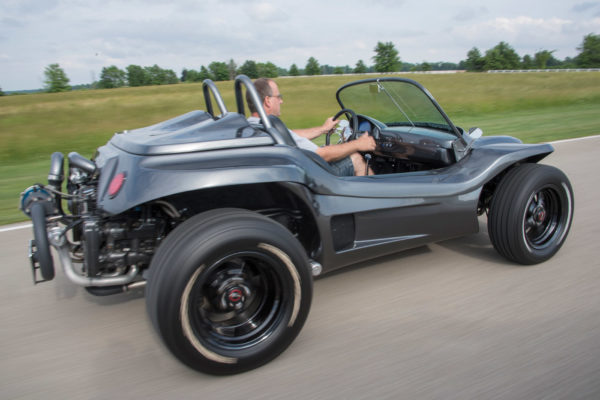
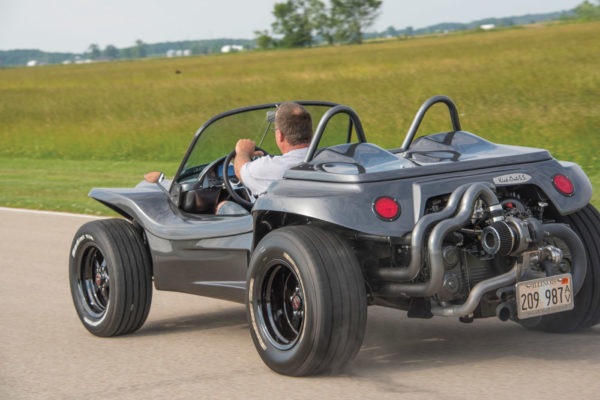
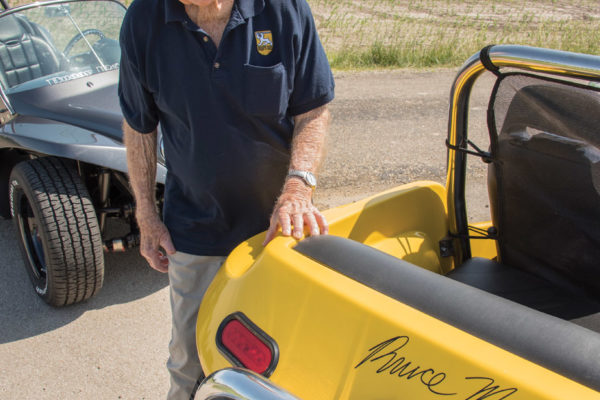
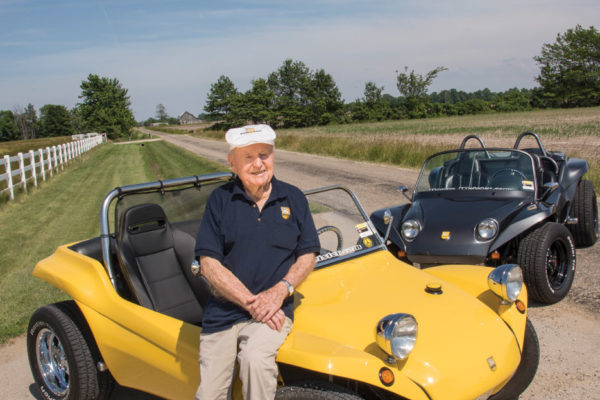
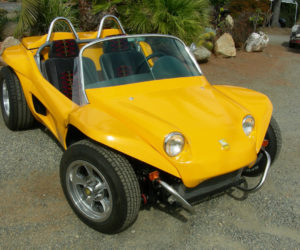
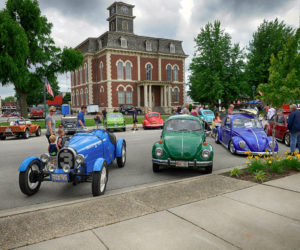

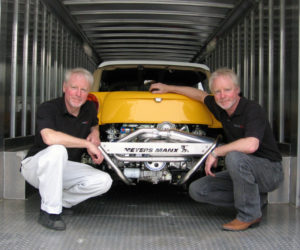
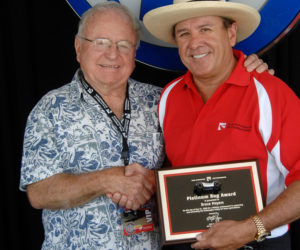
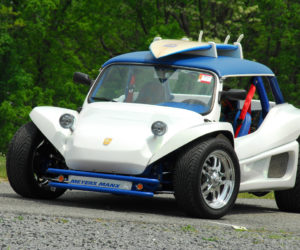




Comments for: Feral Cats
comments powered by Disqus